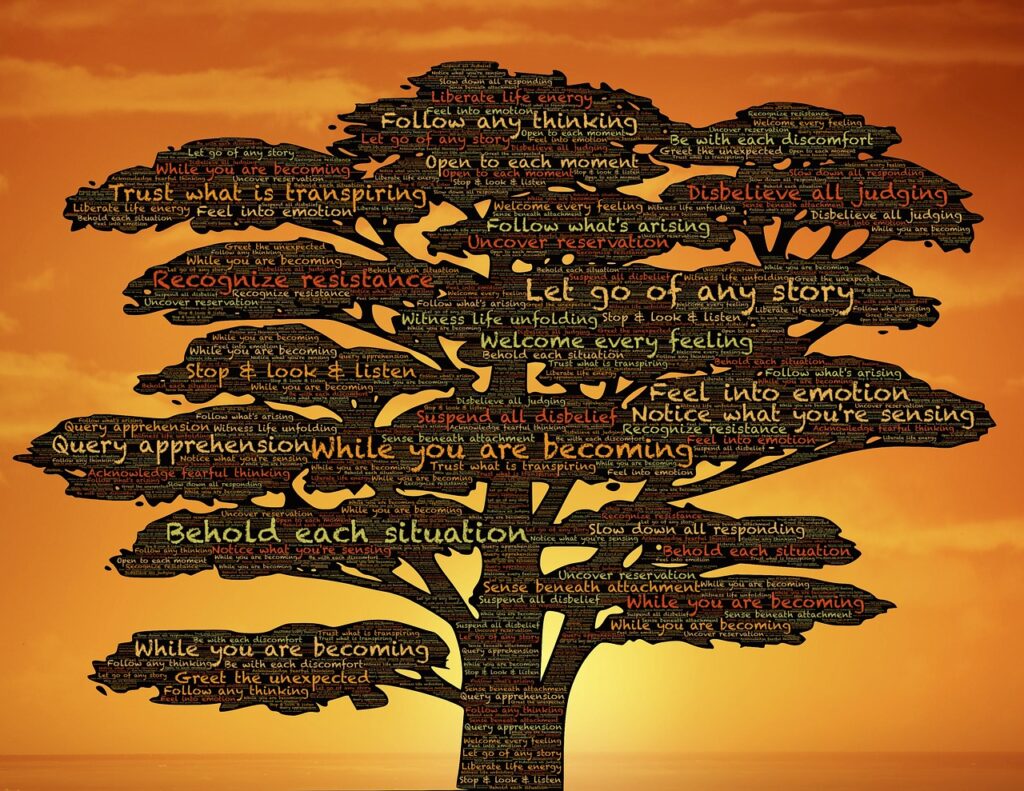Knowledge AND Action

We arrive in Chapter 3 and 4 of The Bhagavad Gita with Arjuna wondering about the difference between a path of knowledge (jnana yoga) and a path of action (karma yoga.) As a matter of fact, each of the Chapters within this translation of The Gita by Jack Hawley ends in the word “Yoga,” so does that suggest each Chapter describes a specific “path of yoga”? Krishna does point out that any path that is focused toward the Divine is a Divine path – “Whatever path a person travels to Me is My path. In whatever way a person approaches Me, I return like for like.” (4.11 BG) I think this is an important reminder how Universal the path of yoga can be. YOUR Divinity is YOUR Divinity – external or internal – Krishna’s point to Arjuna is that HOW we live in and for that Divinity is what really matters.
Following this question about chapter titles, I looked through other translations that I have and also did a very cursory look online. Most Gita translations are cut into 18 chapters, separated from the original full text of the Mahabharata, but the titles of the chapters and the meaning behind those titles are all under the discretion of the translator. The original Bhagavad Gita was not chaptered in such a way, being a long epic poem and not prose. It seems that Jack Hawley has taken on the titles used by his teacher, Sai Baba, where each chapter represents an aspect of the path of Yoga and also refers to the goal of Yoga itself. Every life begins with some dilemma that leads us to search for yoga or some aspect of it. In the case of The Bhagavad Gita, it is the anguish of Arjuna. And, every path of Yoga will lead toward our absolute knowledge of Self and union with our chosen Divinity. So, in each chapter of The Bhagavad Gita, Krishna continues to explain in every way possible how to come to that end.
In Chapters 3 and 4, Krishna continues to clarify for Arjuna the need to align external actions with the knowledge of our Divine Truth. Yoga is a dualistic philosophy with a foundation in two eternal principles: Purusa (referred to in The Bhagavad Gita as Atman, our Divine principle of pure consciousness) and Prakrti (our Nature that is ever-changing outside of purusa). Purusa and Prakrti are the cause, the play, and the battle of our human experience, depicted in The Gita by this conversation between Krishna and Arjuna. With each chapter, the fluctuating Arjuna (prakrti) is drawn nearer to the wisdom of his steady friend Krishna, Divinity itself (purusa). As Krishna explains, to align all activity and thought with the Divine is Yoga. It may look different for each person – warrior, renunciate, intellectual, or otherwise – however, the qualities of any action must be present; devotion, selflessness. We must think only of the greater good, not our selfish desires and goals, to be on the path toward Yoga.
Major themes of The Bhagavad Gita are to act because we cannot avoid action (3.4-5 BG), mentally or physically, and to act within your OWN duty (dharma), not someone else’s (3.35 BG). We must avoid desire of any certain outcome, and not become “attached to the fruits of any action” for our own individual gain (3.19 BG). This is “not to try to restrain our nature but to progressively improve our nature.” (3.34 BG) through a devotional attitude. Action through devotion turns any action into selfless service, which decreases our attachments and lessens our accumulations of karma (actions that keep us attached to the ever-fluctuating Nature and in an endless cycle of life and death).
Krishna gives many examples of the qualities of one who acts in the knowledge of their Divinity and who follows their dharma (duty and right action on the path of yoga).
- Arjuna, truly wise persons are in the world but not of it. (4.18)
- The truly wise act without scheming for the fruits of their actions, and therefore without inner turmoil. This breaks the chain of karma. All their selfish desires have been consumed in the fire of knowing that they are not the body or the doer, but are indeed the Atma (purusa), the True Self Within (4.19)
- Ever content and need nothing (4.20)
- Transcended the pains of opposites; they are the same in success or failure, indifferent to loss or gain; they never bother to compete or compare, are free of envy, and contentedly shoulder whatever comes to them. (4.22)
Perhaps we can all relate to moments in our lives where “the flow” was there, where decisions were clear and our gut, heart or soul knew exactly what was necessary without the fluctuating mind getting in the way. These are moments I would say give us glimpses of what Krishna is speaking of, but it is not yet the end. “In all the world, nothing purifies like spiritual knowledge (knowing the Self). But it takes searching inquiries into the nature of the Real and not-Real, and giving one’s mind wholly to it….Self-knowledge brings fearless action.” (4.38 and 4.42)
I have been getting some great questions and will be writing shorter blogs between some weekly reads to cover some that may not fit the major blog. And, I am also compiling a list for discussion prompts as we go. Please send any and all comments and questions our way! info@yogalacrosse.com